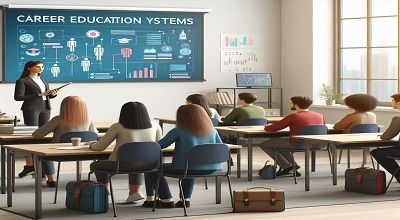Career Education Systems
It seems like you’re asking about career education systems, which can refer to various aspects of education and training aimed at preparing individuals for specific careers. Career education systems typically focus on providing the knowledge, skills, and resources necessary for individuals to enter and succeed in their chosen professions.
Here are a few key components and considerations related to career education systems:
- Vocational Education and Training (VET): This aspect of career education often includes hands-on, practical training for specific trades or occupations. It may be offered through technical schools, community colleges, or apprenticeship programs.
- Higher Education and Professional Degrees: Universities and colleges provide academic programs that lead to degrees in various fields. Professional degrees, such as those in medicine, law, or engineering, are often required for specific career paths.
- Career Counseling and Guidance: Career education system often include counseling services to help individuals explore career options, set goals, and make informed decisions about their education and training.
- Internships and Work-Based Learning: Many career education programs incorporate internships or work-based learning experiences to give students real-world exposure to their chosen fields and help them develop practical skills.
- Certifications and Credentials: Certain careers require specific certifications or credentials. Career education systems may offer programs that prepare individuals for these exams and requirements.
More here…
- Continuing Education: As industries evolve, individuals may need to update their skills. Continuing education programs provide opportunities for professionals to stay current in their fields and adapt to changing industry trends.
- Online Learning and E-Learning: The advent of technology has significantly impacted career education. Online courses and e-learning platforms provide flexible options for individuals to acquire skills and knowledge remotely.
- Job Placement Services: Some career education systems offer job placement services to help graduates find employment in their chosen fields. This can include assistance with resume writing, interview preparation, and connecting with potential employers.
- Entrepreneurship Education: Some career education system include training for individuals interested in starting their own businesses. This may cover topics such as business planning, marketing, and financial management.
- Soft Skills Development: In addition to technical skills, career education often emphasizes the development of soft skills such as communication, teamwork, problem-solving, and adaptability, which are crucial for success in the workplace.
Note:
The specific structure and offerings of career education systems can vary by country, region, and educational institution. They play a vital role in preparing individuals for the workforce and helping them navigate their career paths effectively.
